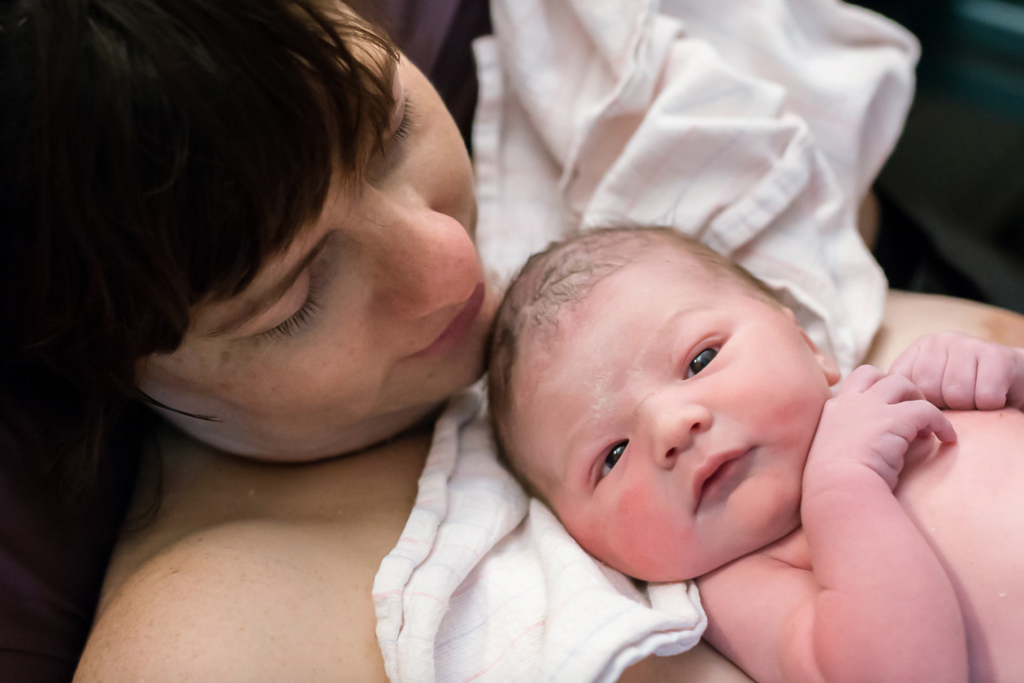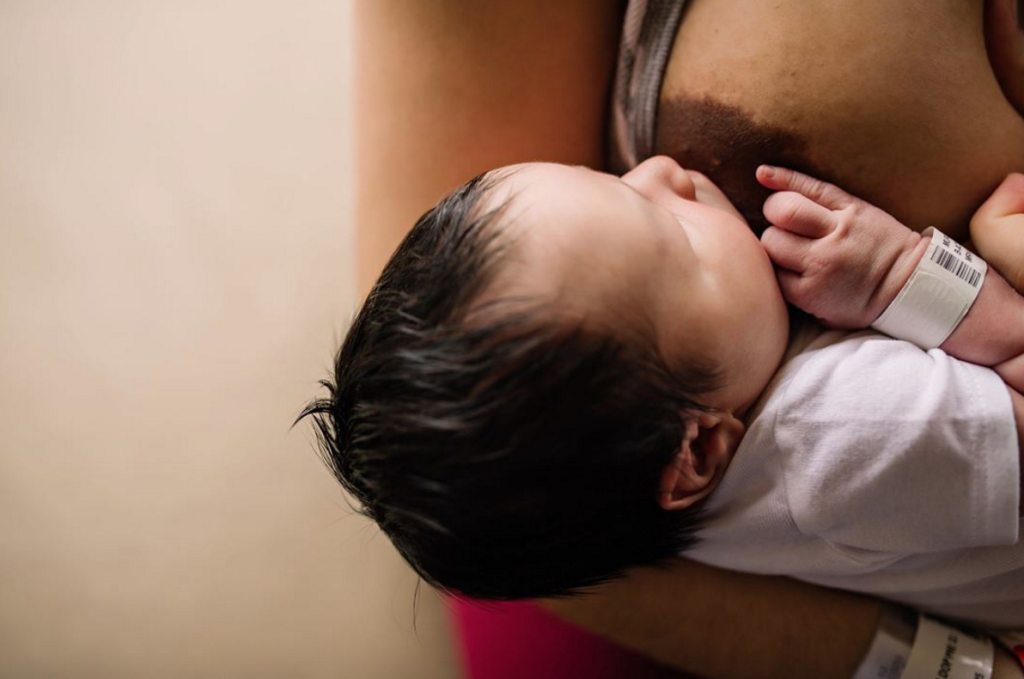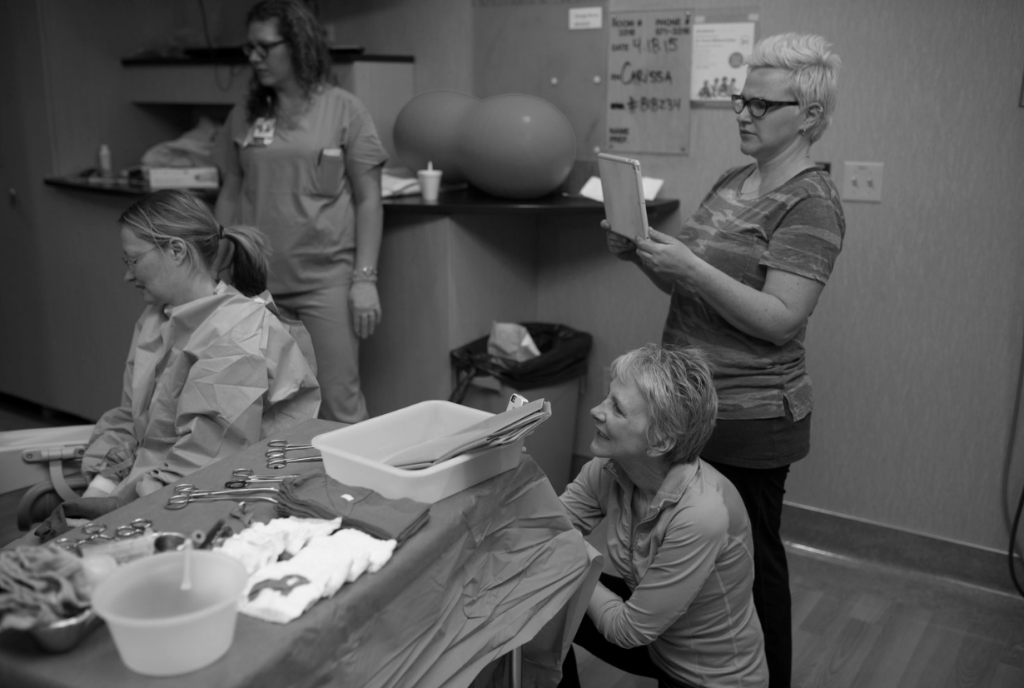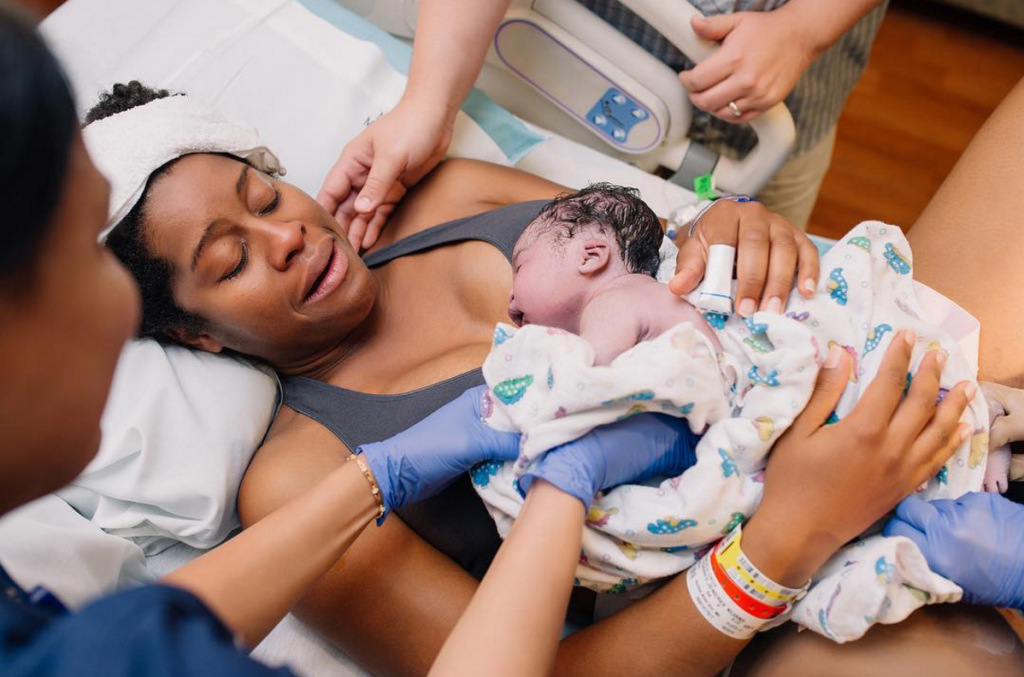How to take care of yourself postpartum after a vaginal birth
I often hear women talk about how unprepared they were for their postpartum recovery period. I, myself was completely shocked that there even WAS a recovery the first time around. I thought you just pushed a baby out and then it was all over. I had never really heard anyone talk about it and I somehow hadn’t thought to read about it while I was pregnant. Recovering from birth is definitely something that needs more attention and emphasis as women prepare for labor and delivery. The better informed a mother is, the smoother recovery can go. Here’s some things to expect about the postpartum period, and how to aid your recovery from a vaginal birth.
Perineum care after vaginal birth
First things first—90% of women tear during a vaginal delivery. Ranked from level 1 through level 4, the degree of tearing is directly proportionate to the length of recovery time. This perineal trauma is a very common complaint after delivery, and can leave mamas feeling sore anywhere from a few days to several weeks (the average length of discomfort is one month). There are several things you can do postpartum to alleviate perineal pain.
Take a postpartum herb bath every day for a week
Postpartum herb baths can be taken immediately after birth (along with baby) and as much as you like after that. I liked taking one every day for a week. My husband would prepare the herbs in the morning so it would be a concentrated brew by the evening and I’d start my bath with the baby (they love it and it helps with umbilical cord healing!) and then my husband would take the baby after about 15 minutes so I could lay back and relax until the water went cold. I largely credit my perineum repair to these baths.
Purchase small herbal sitz baths
For a sitz bath, you’ll need a convenient toilet insert that allows you to soak your bottom in several inches of water without taking a full on bath. You essentially fill a gallon bag with warm water and connect it to the plastic insert that sits right in the toilet seat. It fills quickly and you can soak for up to 15 minutes. These are so helpful, because they keep things clean, and also alleviate swelling and irritation, especially if you have stitches or hemorrhoids. It’s recommended to use these every time you use the bathroom for the first few weeks to aid in recovery.
Use a peri bottle
Many hospitals give these bottles out post-delivery. Prior to going to the bathroom, fill a peri bottle up with warm water. Spray it on your perineum as you are urinating to lessen the sting. Pat yourself dry rather than wiping (I used cloth diapers to pat with instead of toilet paper).
Squeeze your glute muscles when sitting and standing from the toilet. This will prevent your skin from pulling on the stitches.
Purchase a donut to sit on for a few days
These allow maximum comfort as you don’t have to put any pressure directly on your perineum. There will be lots of sitting and lounging the next few days, so this purchase is worth it, especially if you have several stitches.
Use an ice pack or cold compress
Do this a few times a day for the first 24 hours or so. This can help with inflammation. Make sure that you have a layer between the ice and skin so they do not come in direct contact. These cold pads are a great option as well.
Spray your perineum with bottom spray
This is a glorious cooling blend of herbs and witch hazel and it seems to work wonders. It helps with swelling, pain, and itchiness for both perineal pain and stitches as well as hemorrhoids. Plus it has an inverted spray mechanism meaning it sprays easily even when held upside down. Trust me when I say you will want a bottle for each bathroom in your house!
Night sweats after giving birth
There are lots of hormonal changes that take place right after delivery, and your body is also getting rid of a lot of excess fluid it carried while pregnant. These two things combined, might make you wake up at night to find the bedding and your clothes completely soaked. For the first couple of weeks, sleep on an extra sheet folded in half, a towel or a sheet protector. Keep clean undergarments and pajamas handy for a quick middle of the night change. Remember to keep drinking a lot of water. It sounds counter-intuitive to replace excess fluid you are losing through sweat, but remember how much water is going toward milk production, so it’s necessary to keep things functioning well, and restore balance.
After pains also know as afterbirth pains

Your uterus will contract for about a week, every time you nurse the baby, and these contractions (yes they feel like labor contractions!) tend to get more intense with each subsequent delivery. This is nature’s way of shrinking things back to size, and also encouraging the excretion of blood and tissue it no longer needs. Try to think of it as a good thing! I LOVED this tincture with herbs that ease these pains and would put a little under my tongue each time I felt the pains coming on! If the pain gets to be too intense, ask your care provider about taking some tylenol. After about a week or so, the after pains should subside.
Postpartum bleeding
You’ve enjoyed nine months of period-free bliss…now get ready for a massive comeback. Plan on bleeding for about a month to six weeks as your body gets rid of all the protective tissues you used to cushion and grow the baby. After about a week of heavy bleeding, you should start to taper off a bit in the amount you are excreting, each week losing less and less. Your caregiver might give you some large mesh disposable underwear to use after delivery. This is so convenient as you’ll be leaking all kinds of fluid for a while after delivery.
There are also very large overnight pads available that provide maximum coverage—I like these natural ones that don’t stick to you and keep you feeling dry. You’ll change these often and soak a few pads per day.
Passing some heavy clots is fairly normal (even the size of a golf ball or bigger in the first few days). The rule of thumb is generally if you pass a clot smaller than your fist, it’s okay. Anything larger—call your doctor.
Hemorrhoids after baby
A byproduct of pushing or acquired during pregnancy, hemorrhoids are inflamed veins in or around the anus that can become itchy, irritated, and swollen. Most hemorrhoids will go away on their own within a few weeks. In the meantime, try these tips.
Witch hazel tends to do wonders. Use TUCKS pads, which are medicated cooling pads with witch hazel. When you have a bowel movement, use a pad to wipe, and then throw it away or flush them. For added relief, you can put a few pads in your underwear and leave them for 15 minutes or so. Stay well stocked with a container in every bathroom and a pack in your purse.
Constipation after giving birth
Constipation can exacerbate the problem. It’s normal for things to get a little backed up for a while after delivery and that first BM can be downright scary. Being sedentary, stressed, and fatigued also worsens the situation. Ask your doctor what kind of stool softener works best (some hospitals send you home with some). Colace is often recommended and is safe to take while pregnant and nursing or take a milder step by drinking Smooth Move tea. Keep in mind the longer you put off having a bowel movement, the bigger the problem will be, so try to go often. Take your time, and relax. Use a hand with a warm cloth to put counter pressure on your perineum to ease the pain while pushing. Push gently. Don’t force it or strain.
Drink lots of water
With the hormonal changes going on, night sweats, and especially if you are nursing, dehydration is a threat. Drink way more water than you think you need. The large majority you are drinking will go to making milk, so keep large cups with straws filled all over the house—at your nursing station, by your bed, near the couch, in the kitchen. Drink, drink, drink.
Get your fiber
Eat high fiber foods like vegetables and fruits. Berries, nuts, salads loaded with crunchy vegetables, and whole grain foods all are high in fiber. Pour some flax seed (soaked in water) on your food or in a smoothie, and if you can stomach it, prune juice does wonders! Try to keep the sweets and packaged foods to a minimum. Stay clear of other constipating foods for a week or two while you normalize: cheese, bananas, chocolate, white flour, and fried foods all promote constipation. If needed take a fiber supplement.
Incontinence
Your pelvic floor has been thrashed. It will recover, but all your muscles have been stretched, pulled, and potentially torn. Pregnancy hormones have thinned things out, and it takes a while for elasticity to come back. While you wait, you may find you have a lot of incontinence when laughing, sneezing, coughing, or making sudden movements. Repeat to self: “This is normal, this is normal, this is normal.” Be patient with yourself. Wear panty liners, or better yet, purchase some of these disposable protective underwear to wear at the beginning or reusable ones that are a little cuter!
Kegels will be the very best thing you can do for your pelvic floor, and you can start these as early as the day you deliver. Slowly pull up your pelvic floor muscles as you “zip” up your lower abs. Progressively tighten the muscles and then slowly release. Do these periodically. Every time you nurse do a few reps (you’re not going anywhere anyway) and you’ll be sure to get in some good exercise time.
Breast tenderness
The first few days, your breasts produce a nutrient-dense, antibody-rich yellow liquid called colostrum. This is so so good for the baby. It provides protection, immunity, and vitamins. Your regular milk supply will come in within 2-5 days of delivery. At that time, your boobs will get HUGE which lasts for about 24-48 hours before the swelling goes down little by little. Naturally, that can be very uncomfortable. Use special warm compresses or a warm shower to aid with discomfort while being careful not to stimulate the nipples (especially in the shower) as that will just cause you to produce more milk.
Breastfeeding Challenges
There are so many potential breastfeeding challenges, it requires a post of it’s own, but I will mention three big ones here. 
Thrush
Thrush occurs when there is an excess of yeast production in mother or baby. If a woman had a yeast infection close to the time of delivery, thrush can be passed on to the baby during birth. Baby will have a white coating inside her mouth, and also a very red and irritated rash in her diaper area. Thrush can be tricky to treat as it is easily passed back and forth from baby to mother through breastfeeding. A woman can then get thrush on her nipples, which will be very red, and feel like they are on fire. Nursing will be extra painful, like knives are stabbing your areolas when the baby drinks but it is safe to continue nursing. You may want to try a nipple shield to help with discomfort.
It is treated by a prescription from your doctor or also by an over the counter medication called gentian violet (read up on it here). These ointments are rubbed on affected areas several times a day. Take great care in sanitizing everything that comes in contact with breastmilk, breasts, and baby’s mouth (toys, pacifiers, breastpumps, bras, shirts, etc). Avoid sugar and inflammatory foods while trying to treat thrush, as yeast thrives in sugary environments. Read more about thrush prevention, symptoms, and treatment here.
Blocked Ducts
A blocked milk duct is easily identified when there is a hard and painful lump in a breast. This indicates a milk duct has become blocked and milk has backed up. This can lead to further problems, so try to deal with it at the first sign. Get in a hot shower and massage the area to loosen up the lump. Nurse frequently on the affected side, while rubbing the duct. The baby can help to excrete the blockage. Raw cabbage leaves also tend to draw the milk out and help with engorgement. Prevent blocked ducts by ensuring a proper latch, that the breast is drained completely after nursing, and that both breasts receive equal nursing time. Using a Milkies Milk Saver can help relieve pressure on the non-nursing side as well.
Lecithin is a supplement that’s often recommended to help unclog milked ducts. According to Kellymom, “the usual recommended dosage for recurrent plugged ducts is 3600-4800 mg lecithin per day, or 1 capsule (1200 milligram) 3-4 times per day. After a week or two with no blockage, mom can reduce the dosage by one capsule. If there is no blockage within another 2 weeks she can reduce it again by one. Mom may need to continue taking 1-2 capsules per day if stopping the lecithin leads to additional plugged ducts.”
Mastitis
Mastitis occurs when a blocked duct goes undetected or awry. An infection forms from the blocked duct and unused milk. A red spot or two will appear on the outside of the breast that is hot and tender to the touch and mother will start to get flu-like symptoms—fever, chills, muscle achiness. Call a doctor at the first sign of infection, as mastitis can progress very quickly. An antibiotic prescription will often be prescribed and clear things up fairly quickly, but make sure you are nursing frequently on the affected side or pumping frequently to alleviate the pain and clear out the old milk. Lecithin can also help with mastitis, see above.
General soreness
You’ve just been through a fantastic physical feat. Your body is going to be sore in many places you didn’t realize you were even working. Holding the baby constantly, combined with nursing can also add to your muscle fatigue. Shoulder, neck, and back muscles are commonly tense, and arm and leg muscles might feel sore and tender. A postpartum massage or chiropractic adjustment can feel divine soon after delivery. Even if a partner offers a 15 minute massage here and there it can do wonders. We also love to use a tens machine for sore muscles.
Take it extremely easy physically for the next little while. Even if you start to feel energized or better physically, do not overdo it with housework or errand running. Force yourself to keep a low profile. If you do venture out, make short trips. If you decide to go for a walk, aim for refreshment rather than fitness, and keep the distance short. There is plenty of time for that in the future. Plenty!

When to call the doctor postpartum
Be on the lookout for any of these symptoms postpartum. They could indicate further problems. Call a doctor if you have:
- A fever of 100.4 degrees F (38 degrees c) or higher
- Soaked more than one sanitary pad an hour or passed a large clot (bigger than fist) or bleeding increases or turns bright red after having been brown for a few days
- New pain, swelling, or tenderness in arms and legs
- Vaginal discharge with a foul odor
- Painful urination, frequent urge to urinate, or are unable to urinate
- New or worsening belly pain
- Cough, chest pain, nausea or vomiting
- Headaches or vision changes
- Feelings of depression, have hallucinations, suicidal thoughts or thoughts of harming the baby.
- Sore breasts, accompanied by red spots/streaks, breasts that feel hot to the touch, cracked/bleeding nipples or areolas.
Simple ways to take care of yourself postpartum
- Take frequent naps, seriously.
- Nourish yourself for healing. This is an amazing book on food for the first forty days after giving birth.
- Take time each day to yourself to read, relax, listen to music, or do something you enjoy.
- Shower frequently and enjoy a postpartum herb bath nightly.
- Get fresh air.
- Schedule regular time with your partner to connect, even if only for 15 minutes.
- Limit visitors.
- Lower standards for house cleanliness and home cooked meals.
- Talk with other women who can relate to your situation.
- Ask for and accept help when you need it.
The way you care for yourself during this time will greatly influence your recovery speed. Besides, with a new little one, there will not be many opportunities for rest in the near future, so take advantage while the help is there and treat yourself to a good immediate recovery.
This post was co-written by Austyn Smith and Bryn Huntpalmer.
Sources
- Abraham, S., Child A., Ferry J., Vizzard J., Mira M. Jan. 1, 1990. Recovery after Childbirth: a preliminary prospective study. Medical Journal of Australia (152). [January 22, 2017]. http://www.ncbi.nlm.nih.gov/pubmed/2294386
- Royal College of Obstetricians and Gynaecologists. July 11, 2014. [January 22, 2017]. http://rcog.org/uk/en/blog/perenial-tearing-is-a-national-issue-we-must-address/


No Comments yet!